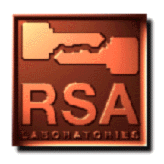

NIST issues standards for cryptographic routines; U.S. government agencies are required to use them, and the private sector often adopts them as well. In January 1977, NIST declared DES (see Question 64) the official U.S. encryption standard and published it as FIPS Publication 46; DES soon became a de facto standard throughout the U.S.
A few years ago, NIST was asked to choose a set of cryptographic standards for the U.S.; this has become known as the Capstone project (see Question 150). After a few years of rather secretive deliberations, and in cooperation with the NSA (see Question 148), NIST issued proposals for various standards in cryptography, including digital signatures (DSS, see Question 26) and data encryption (the Clipper chip, see Question 151); these are pieces of the overall Capstone project.
NIST has been criticized for allowing the NSA too much power in setting cryptographic standards, since the interests of the NSA conflict with that of the Commerce Department and NIST. Yet, the NSA has much more experience with cryptography, and many more qualified cryptographers and cryptanalysts, than does NIST; it would be unrealistic to expect NIST to forego such available assistance.